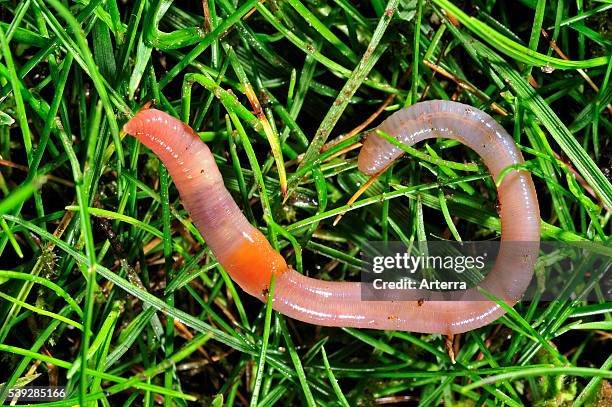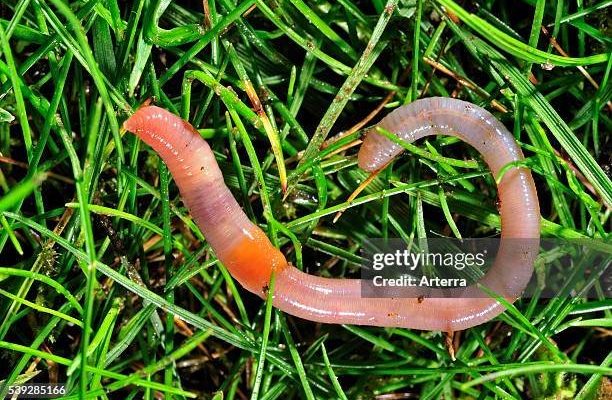
In this article, we’re diving into the fascinating world of earthworms commonly found in gardens. Whether you’re a seasoned gardener or just starting your green journey, understanding these little critters will help you cultivate a thriving garden ecosystem. Earthworms are not just squishy beings; they’re essential for the soil’s health, and knowing the different types can enhance your gardening experience.
Why Earthworms Matter in Your Garden
Before we jump into the different types of earthworms, let’s talk about why they’re so important. Earthworms are often considered nature’s plow. They tunnel through the soil, aerating it and allowing water and nutrients to penetrate deeper. This natural aeration process helps create a healthy environment for your plants to thrive.
Here’s the thing: a garden without earthworms is like a cake without frosting—a little flat and not very exciting. They help decompose organic matter, turning dead leaves and plant material into nutrient-rich compost. This not only nourishes the plants, but it also keeps the soil structure intact. So, next time you see an earthworm, remember that it’s working hard to keep your garden in tip-top shape!
Common Types of Earthworms
Now that you understand their importance, let’s dive into some of the **common types of earthworms** you’ll likely encounter in your garden. Knowing what type you’re dealing with can help you understand how they contribute to your garden’s ecosystem. Here’s a handy list of the most common types:
- European Nightcrawler
- Red Wiggler
- Common Earthworm (Lumbricus terrestris)
- Master Worm
- Giant Red Worm
1. European Nightcrawler
The **European Nightcrawler**, or *Eisenia hortensis*, is popular among gardeners, especially in compost bins. You might think of them as the “night owls” of the worm world. They thrive in cooler temperatures and are known for their large size—often reaching up to 7 inches long.
These worms are great at aerating soil and breaking down organic matter. If you’ve got a compost pile, you’ll want some European Nightcrawlers on the job. They can consume their weight in food every day, turning kitchen scraps into rich compost. Honestly, they really do the heavy lifting!
2. Red Wiggler
Next on the list is the **Red Wiggler** (*Eisenia fetida*), a star in the composting community. They’re smaller than European Nightcrawlers, typically around 4 inches long, and are easily recognizable by their reddish-brown color.
Red Wigglers love to munch on decomposing organic material, making them perfect for indoor vermiculture. You might be wondering why they’re so effective—they reproduce quickly, too! A single Red Wiggler can produce up to 2,000 offspring in a year, which helps speed up the composting process. If you’re composting at home, adding Red Wigglers can give you a nutrient boost.
3. Common Earthworm (Lumbricus terrestris)
The **Common Earthworm**, known scientifically as *Lumbricus terrestris*, is probably what you think of when someone mentions earthworms. They’re often called ‘nightcrawlers’ because they tend to come out at night. These worms can grow to about 8 inches and are usually a faint pink or reddish color.
What sets the Common Earthworm apart is its ability to burrow deep into the soil. They create long tunnels that not only aerate but also enhance drainage. Gardens with a healthy population of Common Earthworms are usually more fertile and better able to support plant life. Their tunneling allows rainwater to reach the roots effectively, which is crucial during dry spells.
4. Master Worm
Also known as the **African Nightcrawler**, or *Eudrilus eugeniae*, the Master Worm is another fantastic addition to your garden. Known for their incredible composting abilities, they can grow up to 10 inches long. With a soft, velvety body, they’re a sight to behold and a joy to have in your soil.
Master Worms are particularly effective in warm climates, thriving in rich, organic material. They process food quickly and can be a powerhouse in breaking down kitchen waste. If you live in a warmer area, you might want to consider adding Master Worms to your gardening toolkit.
5. Giant Red Worm
Last but certainly not least is the **Giant Red Worm** (*Lumbricus rubellus*). As the name suggests, they can reach impressive lengths, often growing over 10 inches. These worms are reddish-brown like the Red Wiggler but have a thicker body.
Giant Red Worms are great for soil health because they consume large amounts of organic matter and produce nearly double the castings compared to smaller species. Their burrowing habits help mix soil layers, which can improve soil fertility. If you want a worm that packs a punch in nutrient production, the Giant Red Worm is a great choice.
How to Attract Earthworms to Your Garden
So now that you know about the types of earthworms, you might be wondering how to attract them to your garden. After all, a thriving worm population can greatly enhance soil health. Here are a few tips to make your garden worm-friendly:
- Keep the soil moist: Earthworms prefer damp soil, so make sure not to let it dry out too much.
- Avoid chemicals: Pesticides and chemical fertilizers can harm earthworms. Opt for organic alternatives instead.
- Compost regularly: Adding organic matter like kitchen scraps and leaves creates a buffet for earthworms. They enjoy munching on decomposing material.
- Mulch: A layer of mulch provides moisture and shelter, making your garden more appealing to these little helpers.
Earthworms are like the unsung heroes of your garden. Each type of worm contributes uniquely to the health and productivity of your soil. By understanding the different types of earthworms and actively encouraging them to take up residence in your garden, you’re setting yourself up for gardening success.
So, the next time you spot a wriggly friend in your garden, take a moment to appreciate the important role it plays. By nurturing these little critters, you’re investing in a healthier, more vibrant garden for years to come. Happy gardening!

